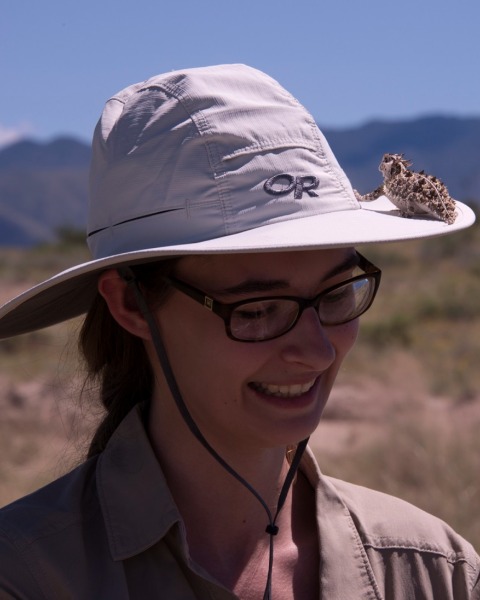Systematics, Evolution, and Biodiversity
Poster
SysEB: Morphology and Behavior
D3448: Intraspecific variation in reflectance of solar radiation in dimorphic Centris pallida (Hymenoptera: Apidae) male bees as a thermoregulatory adaptation to different microclimates
Wednesday, November 16, 2022
9:00 AM - 2:00 PM PT
Location: West Exhibit Hall A

Meghan Barrett
Postdoctoral Fellow
California State University
Pasadena, California- SO
Sean O'Donnell
Drexel University
Philadelphia, Pennsylvania
Presenting Author(s)
Co-Author(s)
Incoming energy from solar radiation can significantly impact organisms’ thermal balance via radiative heat gain. Species adapted to different environments can differ in solar reflectance profiles. We explore the possibility that conspecific individuals using thermally-distinct microhabitats can show adaptive intraspecific variation in reflectance. Male Centris pallida (Hymenoptera: Apidae) bees, found in the Sonoran Desert, use alternative reproductive tactics associated with distinct microclimates. In the visible spectrum (400-700 nm), small-morph males and females have a darker dorsal coloration that may serve as a thermoregulatory advantage in the early, cooler part of the mornings and in their cooler microclimates. Conversely, large-morph males have a paler coloration that may serve as an adaptation to the hotter microclimate used for their mating behaviors. We show that differences in reflectance that extend beyond the visible (400 – 700 nm) into the near-infrared (700 - 2500 nm) and are indicative of thermoregulatory adaptation. We hypothesized that microclimate usage would drive morph-specific differences in UV-NIR reflectance on the dorsal, but not ventral, body surface, and that these differences would be related to the hairs (branched setae) and not the cuticle. As predicted, we found that large-morph males had increased UV-NIR reflectance, resulting in lower solar absorption coefficients. This thermoregulatory adaptation was specific to the dorsal surface, and produced by differences in hair, not cuticle, characteristics. Our results showed that intraspecific variation in behavior, particular in relation to microclimate exposure, can generate unique thermal adaptations that increase the reflectance of shortwave radiation among individuals within the same population.


